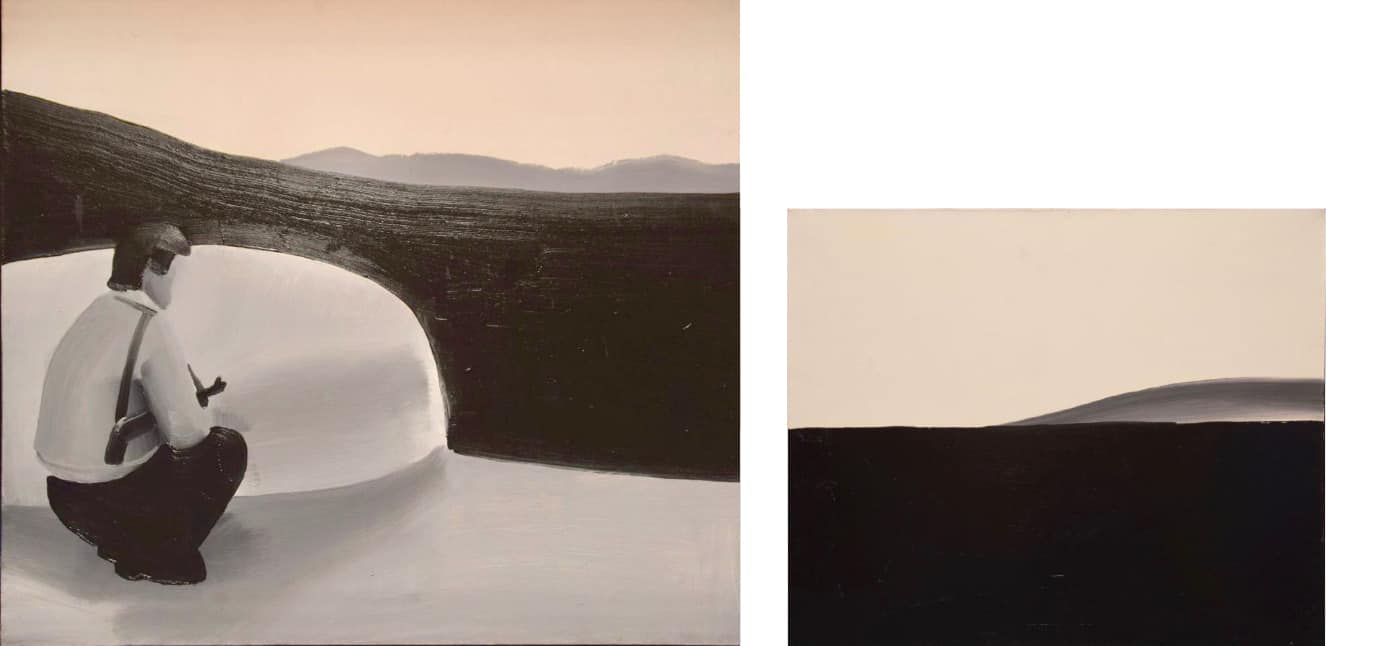Wilhem Sasnal: Kitsch War

Untitled – Czeczenia (2 parts)
2000
Oil on canvas
Wilhelm Sasnal’s approach to painting is traditional and formal, yet he enjoys subverting the subject matter by often borrowing subjects from art history, 20th century propaganda, and photojournalism. Usually with dark undertones, Sasnal renders pop-like figures, where authoritarianism and violence are reconstituted as retro cool. Such is the case in Adrastus Collection’s recent acquisition Untitled – Czeczenia (2 parts), this dark appropriation is a reference to Second Chechen War which is also officially known for the Counter-terrorist operations on territories of the North Caucasian region (from the Russian point of view). This was an armed conflict on the territory of Chechnya and the border regions of the North Caucasus between the Russian Federation and the Chechen Republic of Ichkeria, with various militants of Islamist groups, that took place from August 1999 to April 2009.
Sasnal’s comment on war and the use of soldiers are reduced to something as simple as a kitsch logo: war, oppression, and authority are reconstituted as youth culture communism-chic.[1] The soldier present in Untitled – Czeczenia (2 parts) is wittingly represented in a clean and almost smart attire, rendered in cartoon fashion, crouching behind what seems to be a boulder. Sasnal’s comment is almost comic as he adopts a moral capitalist ethic, where authoritarianism and violence are reconstituted as retro cool.[2] Sasnal’s paintings tread far form the typical artist approach, characteristically condemning war, but rather turns in the direction of media-dictated conformity, portraying the act of war as attractive.
Wilhelm Sasnal’s deconstruction of war, which is filtered through a mass-media association, is then further explored in the medium of painting allowing Sasnal to explore his own artistic interpretation and understanding of this particular historical moment. His work questions the space between ‘personal’ and ‘public’, as the artist’s strives to define individual experience within a world order of collective consciousness.[3] Painting allows him to challenge traditional perceptions and distort representations of subject matter stripping them to their simplest form and estranged from their original context and meaning.
Using imagery similar to a photograph, Untitled – Czeczenia (2 parts) uses two predominant colours, black and white, with additional tones of the two. Details are seemingly eradicated through heightened contrast, and thus the image is simplified through the photographic technique of likeness to ‘overexposure’ with the addition of the intervention of the artist’s hand. Wilhelm Sasnal’s subverted image is dissociated from their once powerful and shocking illustrations of historical events such as the Second Chechen War, and now acts as mere vestige of them.
Wilhelm Sasnal was born in 1972 in Tarnow, Poland where he went on to study Painting between the years of 1999-4 at the Academy of Fine Arts in Kraków and then later in 1994-2 Architecture at the Polytechnic in Krakó. His recent solo exhibitions include ENGINE, Kistefos-Museet, Oslo, Norway; Sleep, Sadie Coles HQ, London, UK; 2017 Fundacja Galerii Foksal, Warsaw, Poland; Anton Kern Gallery, New York, NY; 2016 Hauser & Wirth, Zürich, Switzerland; 2015 Wilhelm Sasnal, Johnen Galerie, Berlin, Germany; Columbus, Sadie Coles HQ, London, UK; Wilhelm Sasnal: Paintings, West Bund Art & Design Fair, Qiao Zhi Bing Art Space, Shanghai, China and Sadie Coles HQ, London, UK. His recent group exhibitions include: 2018 In Tune with the World, Louis Vuitton Foundation, Paris, France; 2017 Beyeler Collection/Remix, Fondation Beyeler, Basel, Switzerland; L’Été plus vaste que l’Empire …, Wentrup Gallery, Berlin, Germany; Kunstwerk Leben, Zentrum für verfolgte Künste, Solingen, Germany and PAINTING, LeeAhn Gallery, Daegu, South Korea. He also has a selection of feature films including 2016 The Sun, The Sun Blinded Me, 1 hr 14 minutes and 2013 Huba (Parasite), with Anka Sasnal, 66 mins, super 16mm transferred to 35 mm and Aleksander, 58 mins, super 16 mm transferred to 35 mm. Featuring in multiple catalogues and publications such as, Majmurek, Jakub and Łukasz Ronduda. “Parasite | It Looks Pretty from a Distance.” Polish Cine Art, or the Cinematic Turn in Polish Contemporary Art. Warsaw: Political Critiques Publishing House and Museum of Modern Art in Warsaw, 2015. And present in some of the top public collections such as, Carnegie Museum, Pittsburg, KS, USA; Coppel Collection, Mexico City, Mexico; De la Cruz Collection, Miami, USA; Gallery of Contemporary Art Bunkier Sztuki, Krakow, Poland; Guggenheim Museum, New York, NY, USA and the Museum of Modern Art, New York, NY USA.
[1] Saatchi Gallery. “Wilhelm Sasnal.” Saatchi Gallery, https://www.saatchigallery.com/artists/artpages/wilhelm_sasnal_soliders.htm.
[2] Ibid.
[3] Ibid.
